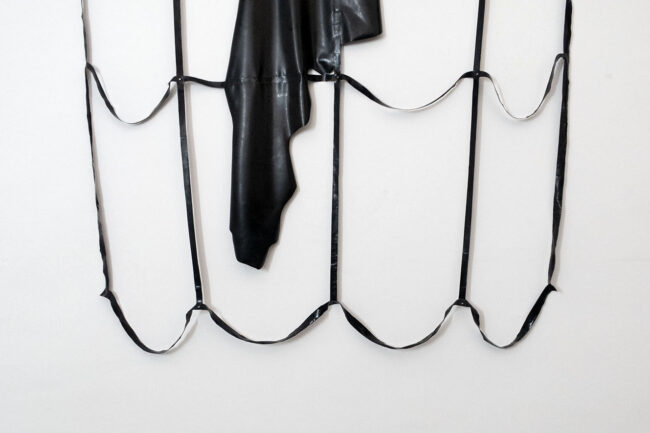Latex-America
after extractivism (2020)
The Latin American cartography is represented with a soft map made in latex, a flexible and elastic material. The thin thickness of the latex used gives the work a disembodied and fragile character, although it retains its characteristic elasticity and lightness.
In Latex-America (America-Latex), Latin America’s geography shapes appear as a skin removed from the surface, as if it were a map without a basis. The cartography seems to be extracted from some unknown substrate, a drawing that appears to have had its body subtracted and displaced.
It is relevant to point out the material from which the work was made is mentioned in the title due to its relevance, both for the physical presence of latex in the piece and the historical relevance of Latin America’s raw material.
Latex production inevitably refers to the history of the exploitation of this raw material in South America.
Latex (which after processing is transformed into natural rubber) is original from South America, extracted from the Seringueira (Hevea Brasiliensis), native plant of the Amazon. Although rubber exploitation refers to the period before the colonization of Latin America, its systematic exploitation only occurred centuries later.
The exploitation of rubber was at the core of Brazil’s development from the middle of the 19th century (first Rubber Cycle), going into decline after plantations in Southwest Asia were established from contraband of seeds from the Amazon to colonies in England.
Latex-America (América-Látex) | soft-map made of latex | 300 x 200 cm | 2020




